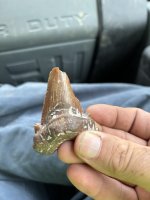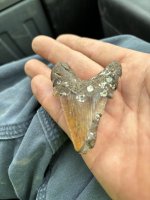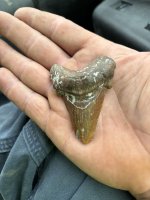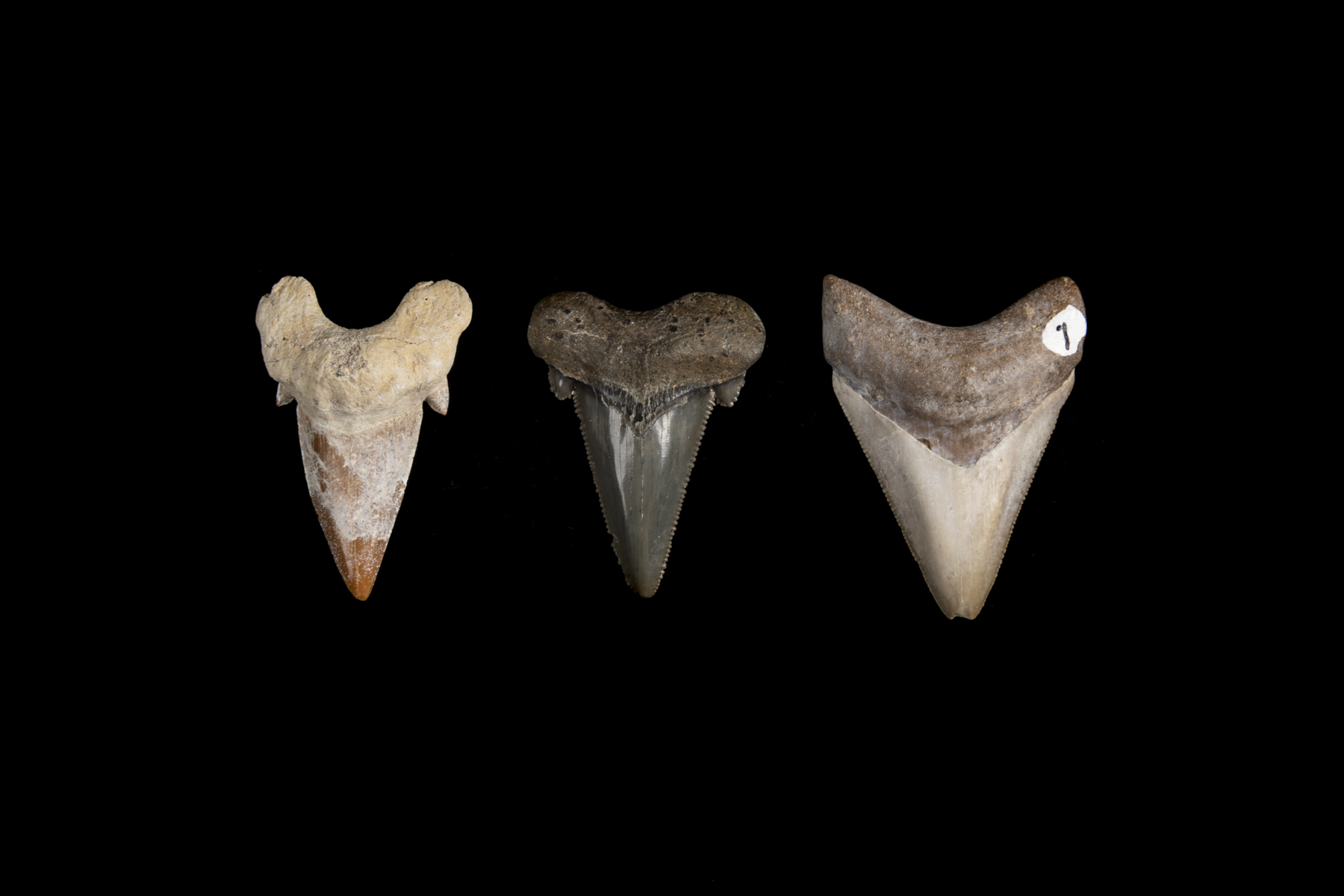Nathan W
Bronze Member
- Jan 14, 2023
- 1,769
- 4,416
My mother gave me this sharks tooth. She doesn’t know a lot about it. If I had to guess looks large maybe a great white? I’m not sure if it’s legit or not. It seems a little heavy. Any opinions are welcome.








